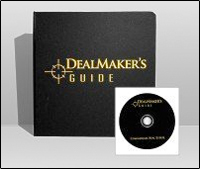In my previous article, Top 5 Mistakes of Beginning Commercial Real Estate Investors, we discussed 5 of the 10 most common mistakes investors make in commercial real estate.
They could be summed up as:
-
Lack of market knowledge
-
Lousy due diligence
-
Bad math
-
Over-leverage
-
No plan
These are fatal errors. An investor who chronically makes these mistakes will not long be an investor.
The common mistakes made by experienced investors are a bit more subtle, but are perhaps even more damaging because over time the costs are compounded until the entire portfolio is affected.
1. Failure to mind the balance sheet
There are four ways to make money in real estate: cash flow, appreciation, equity growth, and tax benefits. The operating statement shows just one of those–the cash flow. The balance sheet shows the other three.
Just as one adjusts rents and expenses to improve operating performance, the balance sheet should be managed to best utilize the assets. The key measure, contrary to popular belief, is not ROI (return on investment); it’s ROE (return on equity). These decisions also affect the speed of wealth creation and tax efficiency.
That’s three of the four or 75% of the sources of profit! If you don’t understand your balance sheet, sit down with an accountant and get a lesson in the basics.
2. Bad deals and bad partners
It’s a given that we are not going to be right every time. We’re going to wind up with properties that don’t perform as expected, or that the market direction moved against, or ones we just don’t like. As Warren Buffet said, “the first rule of investing is to not lose.” Learn to spot a losing position quickly and get out.
This is not to advocate abandoning an investment plan because of minor setbacks. Every project has them, and that’s where perseverance is required. But a deal that goes sour on several fronts at once is a candidate for the “learning experience” pile. Don’t fall in the trap of being “married” to a position. The support payments will swallow you whole.
The problem may not be the property, but the people. When problems arise in partnerships, especially those that started as friendships, things can get sticky and uncomfortable. Pain may be required, but misery is optional. If your partners are driving you crazy, or if you’re all crazy, exercise a little civility and be willing to call it over.
If a good buy/sell arrangement was not included in your partnership agreement, make your own. One solution: You could write down a number that you will either pay for your partners’ interest or accept for your interest in the assets.
That’s the same way my mom made my brother and me divide the last pieces of our favorite pie; one cuts the slices and the other gets to choose his piece. It instantly ends any haggling or jockeying for position.
Close the deal quickly and move on. Life is too short.
3. Over-reaching
Swinging for the bleachers in high-risk, home-run-type deals that require more capital or expertise than you have is a sure recipe for disappointment, frustration, and can end in disaster. Before you start “thinking outside the box” make sure you know how things work inside the box.
It takes hard work and perseverance to achieve success in any field, and real estate is no different. In addition to property-specific plans, it’s a good idea to also have a “big-picture” plan of your investments–where they need to take you, how, and when.
As you increase your knowledge and capacity, the big deals will come, and you’ll know you’re ready when you automatically focus on the pitfalls before the rewards.
4. “Dirt-rich, cash-poor”
This refers to the situation of having more land than cash to cover it and is a common outcome for an investor who accumulates a bunch of properties that have nothing in common but their owner.
If you have multiple properties and are using the gains from some to cover losses in others and losing the battle, it’s time to get off the treadmill, despite the temptation to hang on.
Go through your portfolio in detail. (A checklist for reviewing owned assets is included in Dealmaker’s Guide to Commercial Real Estate.) Identify improvements that you can make immediately and do them. Dump losers and anything that has needs that can’t be funded in the next year.
Be merciless. Look at it like cutting diseased branches off of a tree: Serious cases may require aggressive pruning to save the core.
Then focus your energy and resources on creating maximum value in the remaining properties that fit your big-picture investment goals.
5. Not using local market knowledge
We all read the national media and trade magazines and get a sense of what the “market” is doing. But in reality, all real estate is local. There is no national real estate market.
There isn’t a ticker at the bottom of the screen on CNBC that tells me what my buildings are worth. Their value is determined by local market conditions, for example: rental rates, occupancy levels, competitive space supply, demographic trends, etc.
Our existing investments provide a window on performance and needs of that market that is a competitive edge over other investors. But it is only an edge if it’s used.
By systematically collecting just a few local demographic statistics (job growth, population growth and income) and property performance fundamentals, we can get ahead of the curve. We see trends coming rather than trying to catch the last one; we create our own opportunities and reduce our vulnerability to competitive projects.
I hope you’re not guilty of any of the above. If you’re like me, you have some blind spots, and a spotlight is just what the doctor ordered.
 |
Dealmaker’s Guide to Commercial Real Estate Learn from Ray Alcorn’s lifetime of experience. Dealmaker’s Guide to Commercial Real Estate is the definitive tome on commercial real estate.It is a “must have” for experienced investors who want to build long-term, substantial wealth. Order yours today! |
About the Author…Ray Alcorn is the CEO of Park Real Estate Inc., a real estate development and investment firm based in Blacksburg, Virginia. The company owns and manages a portfolio of retail, office, and hospitality properties. Ray generously hosts our Commercial Real Estate discussion forum, where he answers questions and and participates in discussions with other commercial real estate investors. In his home study course, The Dealmakers Guide to Commercial Real Estate, Ray shares a lifetime of experience investing in commercial real estate. This book provides real-world information written by a true dealmaker, including how to identify opportunities, determine value, and how to structure deals for maximum returns. It is an invaluable resource for creating and building wealth in commercial properties of all types. |
|

